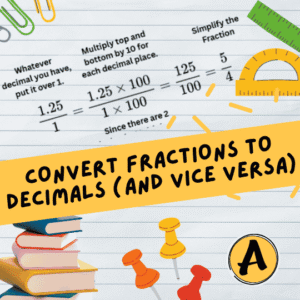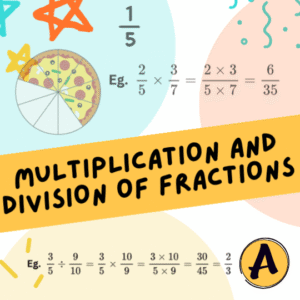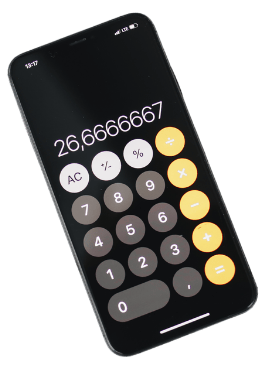✖️ Multiplication — 2-digit × 1-digit
✖️ Multiplication — 2-digit × 2-digit
✖️ Multiplication — 3-digit × 1-digit
✖️ Multiplication — 3-digit × 2-digit
What are the four rules of multiplication?
Think of these as important ideas or basic truths about how multiplication works.
- If we swap the order of the numbers you’re multiplying, the result will remain the same (E.g., 4×6 is the same as 6×4)
- If we multiply three or more numbers, it doesn’t matter which pair we multiply first; the final answer will be the same
- Multiplying any number by 1 will not change the number
- Any number multiplied by 0 will always result in 0
What are the 5 stages of multiplicative thinking?
This describes the steps children usually take to learn and understand multiplication deeply.
- It starts with simple counting, then moves to thinking of multiplication as adding the same number many times
- Next, children learn to count in equal groups
- After that, they start to see how multiplication and division are connected
- This is followed by how they can be used to solve problems
- Finally, they become flexible in using these ideas to tackle more complex math
What are the 3 rules of multiplication?
There isn’t a fixed list of just “three rules.” People might be thinking of a few important basic facts or the rules for multiplying with positive and negative numbers. The basic facts often highlighted are that anything times 0 is 0, and anything times 1 is itself.
If talking about positive and negative numbers, the rules are:
- A positive number times a positive number makes a positive number
- A negative number times a negative number makes a positive number
- A positive number times a negative number makes a negative number
What is the easiest way to teach multiplication?
The simplest way to start is by showing what multiplication actually means. Use everyday objects like toys or blocks to create equal groups. Show that 2×3 means 2 groups of 3 things. Connect it to adding over and over (3+3) and counting by jumping numbers (skip counting: 3, 6). Start with the easiest ones, like multiplying by 0, 1, 2, 5, and 10, as they have clear patterns. Make it hands-on and fun!
How to help a student memorize tables?
Teaching a child to memorize multiplication tables is most effective when they first understand what multiplication means. Explain that it’s a quick way of adding the same number many times (repeated addition) or counting equal groups of items. Once they grasp this concept, move on to memorization using a variety of engaging methods. Playing math games, using flashcards, singing multiplication songs or rhymes, and looking for patterns in the numbers are all helpful tools. It’s also wise to start with the easier tables first, such as the 2s, 5s, and 10s, to build confidence before moving on to the more challenging ones. Regular, fun practice is key to helping the facts stick.
What order should you learn the times tables?
It’s usually easiest to learn them in an order that builds confidence. Start with the ones that have simple patterns: 0s, 1s, 10s, and 5s. Then move to the 2s, which are just doubling. After that, the 4s are like doubling the 2s, and the 9s have some helpful tricks. You can learn the others (3s, 6s, 7s, 8s, 11s, 12s) after you have a solid base, remembering that knowing one fact (like 3×6) means you also know its switch-around (6×3).
What is a good rhyme for multiplication?
Rhymes can make remembering facts more fun! They often link the numbers or the answer to a simple phrase. For the tough fact 7×8=56, a rhyme is “Five, six, seven, eight, fifty-six is seven times eight.” For 6×8=48, you might say, “Six times eight is forty-eight, don’t be late!” The best rhymes are ones that are easy to remember and repeat.
How to multiply for beginners?
When you’re just starting, think of multiplying as having a certain number of equal groups. If you see 2×5, imagine 2 groups with 5 things in each group. Then, count them all up (5+5=10). Multiplication is just a quick way of doing that repeated adding. You can use pictures, blocks, or anything you can group to see how it works.









